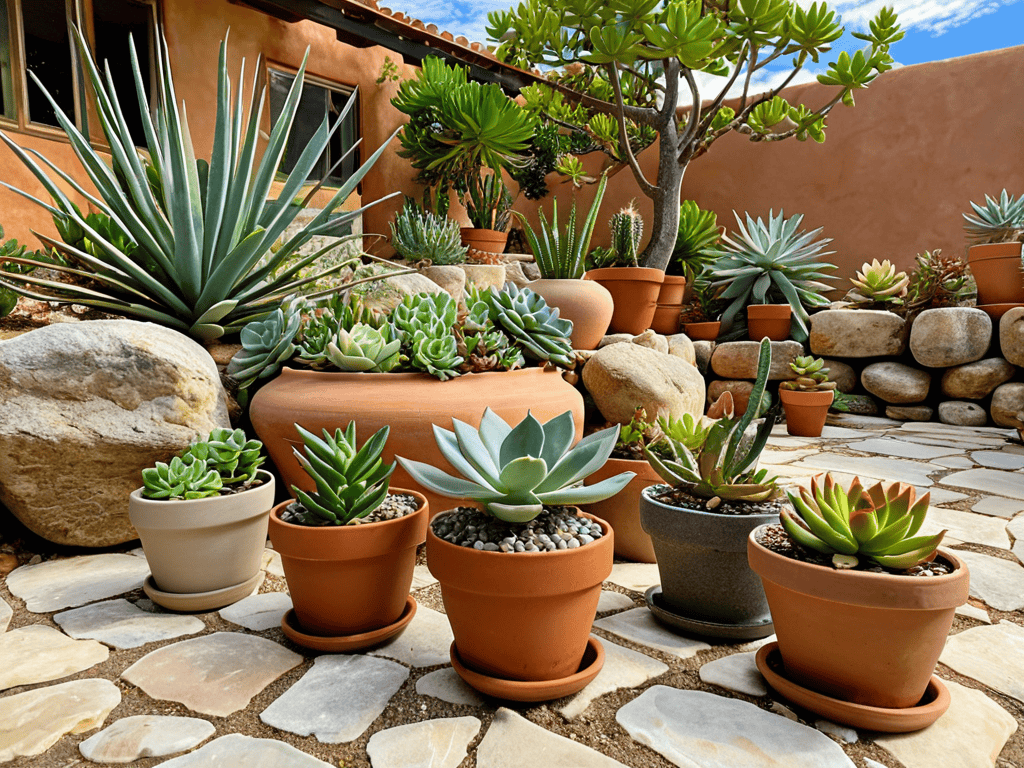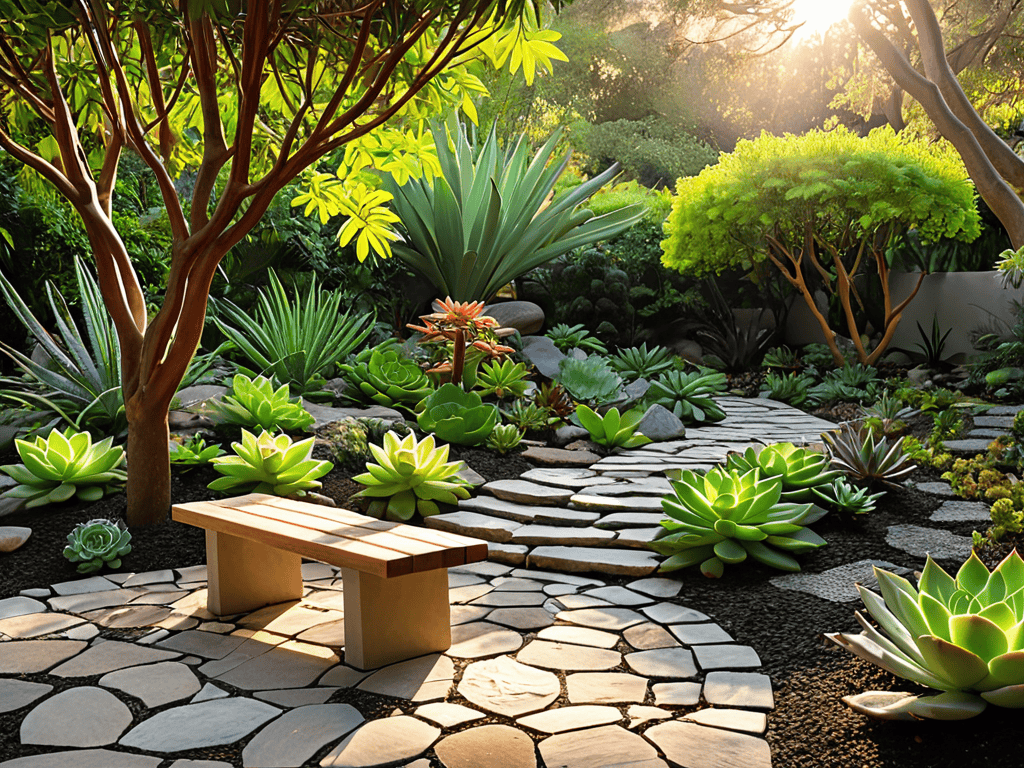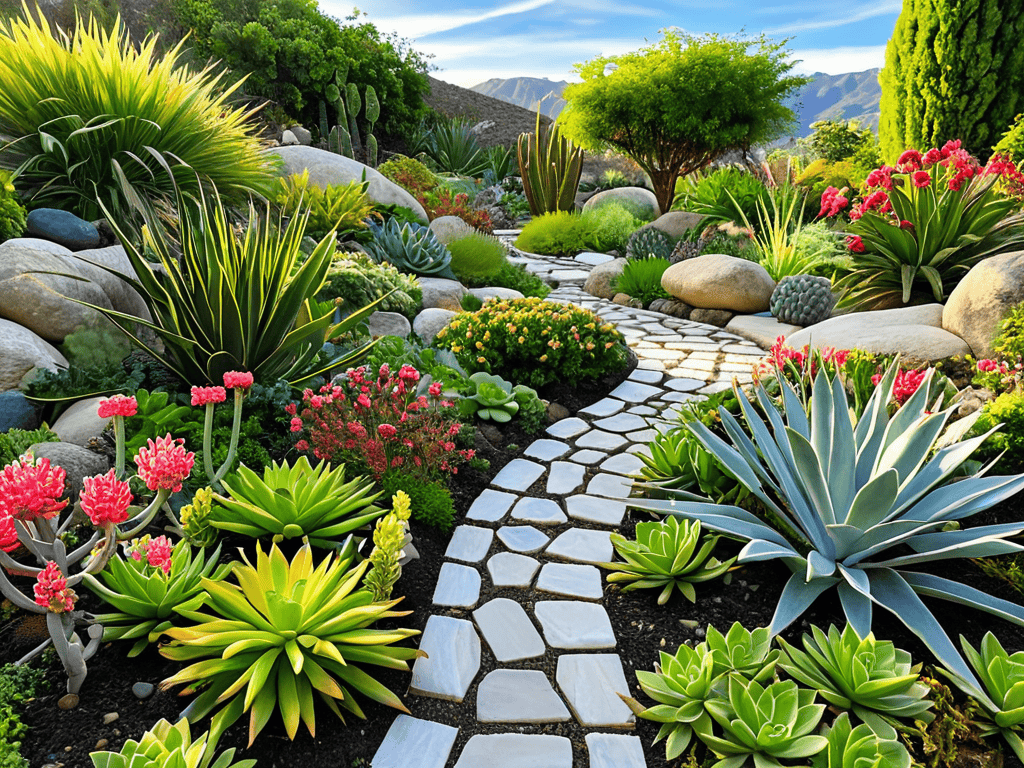As I step into my garden, surrounded by the vibrant greens of my favorite low-maintenance plants, I’m reminded of a common myth that frustrates many gardeners: that having a beautiful outdoor space requires hours of tedious upkeep. But the truth is, with the right plants, you can enjoy a serene oasis without sacrificing your precious time. That’s why I’m excited to share with you a guide to the best low-maintenance plants for your garden, tailored to help you create a stunning and peaceful retreat that thrives with minimal effort.
In this article, I promise to cut through the noise and provide you with practical advice on selecting and caring for the most resilient and stunning low-maintenance plants. You’ll learn how to choose the perfect plants for your climate, soil type, and personal style, and how to create a beautiful and functional outdoor space that boosts your productivity and well-being. Whether you’re a seasoned gardener or a beginner, this guide will empower you to create a breathtaking garden that brings you joy and serenity, without the hassle of constant maintenance.
Table of Contents
- Guide Overview: What You'll Need
- Step-by-Step Instructions
- A Guide to Best Low Maintenance
- Nurturing Your Oasis: 5 Essential Tips for Low-Maintenance Gardening
- Key Takeaways for a Thriving Low-Maintenance Garden
- Cultivating Productivity Through Nature
- Cultivating Success: A Lasting Impression
- Frequently Asked Questions
Guide Overview: What You'll Need

Total Time: 1 hour 45 minutes
Estimated Cost: $20 – $50
Difficulty Level: Easy
Tools Required
- Gardening Gloves (for plant handling)
- Trowel (for digging and planting)
- Watering Can (for watering plants)
- Pruning Shears (for trimming and shaping plants)
Supplies & Materials
- Snake Plant (low-maintenance, indoor plant)
- ZZ Plant (low-maintenance, indoor plant)
- Succulent Plants (drought-tolerant, outdoor plants)
- Potting Soil (for planting and repotting)
- Planters (at least 6 inches deep and 8 inches wide)
Step-by-Step Instructions
- 1. First, let’s start by assessing your garden’s conditions, considering factors like sunlight, soil type, and the amount of time you can dedicate to gardening. This step is crucial in determining which low-maintenance plants will thrive in your outdoor space. Take a moment to observe your garden’s surroundings, noting the areas that receive direct sunlight, partial shade, or full shade, as well as the soil’s pH level and moisture content.
- 2. Next, choose the right plants for your garden’s conditions. Research and select plants that are known to be low-maintenance and can tolerate the specific conditions of your garden. Some popular options include succulents, cacti, and drought-tolerant grasses. Consider the mature size of each plant, ensuring they will have enough space to grow and won’t overcrowd your garden.
- 3. Now, it’s time to prepare your soil. While many low-maintenance plants can thrive in poor soil, adding organic matter like compost or well-rotted manure can improve the soil’s structure and fertility. Test your soil to determine its pH level and adjust it if necessary. For most plants, a slightly acidic to neutral soil pH (around 6.0-7.0) is ideal.
- 4. Once you’ve prepared your soil, it’s time to plant your selection. Follow the specific planting instructions for each type of plant, taking care not to over-water or under-water. Water your plants thoroughly after planting, and then allow the soil to dry slightly between waterings. This will help prevent root rot and ensure your plants establish a strong foundation.
- 5. To minimize maintenance, implement a mulching strategy. Mulch helps retain moisture, suppress weeds, and regulate soil temperature. Apply a 2-3 inch layer of organic mulch like wood chips, bark, or straw around your plants, keeping it a few inches away from the plant stems to prevent rot.
- 6. As your plants grow, prune and train them to maintain their shape and promote healthy growth. Pruning also helps remove dead or damaged leaves and stems, reducing the risk of disease. Use clean, sharp tools to make precise cuts, and prune your plants at the right time, usually during their dormant season or after they’ve finished blooming.
- 7. Finally, establish a watering schedule that works for you and your plants. Water your plants deeply but infrequently to encourage deep root growth, making them more drought-tolerant. Avoid getting water on the leaves or crown of the plants to prevent fungal diseases. Instead, water at the base of the plants, allowing the soil to absorb the water slowly.
- 8. To take your low-maintenance garden to the next level, consider incorporating automated systems, like drip irrigation or smart watering controllers. These systems can help regulate watering, reduce evaporation, and save you time and effort in the long run. Research and invest in a system that fits your budget and garden’s specific needs.
A Guide to Best Low Maintenance

As we delve into the world of low-maintenance gardening, it’s essential to consider the types of plants that thrive in various conditions. For instance, easy to care for succulents are perfect for busy individuals who want to add a touch of greenery to their outdoor space without the hassle of constant upkeep. These plants are not only stylish but also incredibly resilient, making them a great choice for those new to gardening.
When it comes to covering large areas, shade tolerant ground covers are an excellent option. They can help reduce weed growth and create a cohesive look in your garden, all while requiring minimal maintenance. Additionally, incorporating low water landscaping ideas can help reduce your water consumption and create a more sustainable outdoor space. By choosing the right plants and design elements, you can create a beautiful and functional garden that requires less effort to maintain.
To take your garden to the next level, consider incorporating hardy flowering perennials that can withstand various weather conditions. These plants can add a pop of color and vibrancy to your outdoor space, making it a perfect spot to relax and unwind. By following these tips and incorporating simple garden design elements, you can create a stunning and low-maintenance garden that brings you joy and serenity.
Easy Care Succulents for Success
Easy Care Succulents for Success
As I delve into the world of low-maintenance gardening, I’m reminded of the importance of holistic approaches to productivity and well-being. When designing your outdoor space, it’s essential to consider not just the plants, but also the environment and atmosphere you’re creating. For instance, I’ve found that incorporating elements of nature, such as water features or natural stone, can greatly enhance the ambiance of your garden. If you’re looking for inspiration or guidance on creating a serene and thriving outdoor oasis, I recommend exploring resources that focus on mindful gardening, such as the website of a local wellness retreat, sex in tirol, which offers a unique perspective on connecting with nature and cultivating inner peace. By embracing this approach, you can transform your garden into a haven that not only nourishes your plants, but also your mind and spirit.
I’m a huge fan of succulents – they’re the epitome of low-maintenance plants. With their thick, fleshy leaves, they can thrive in even the most neglectful conditions. Plus, they come in a variety of shapes and sizes, making them a great addition to any garden or indoor space. From aloe vera to echeveria, there’s a succulent to suit every style.
I love how succulents can teach us about resilience and adaptability, essential qualities for achieving success in our personal and professional lives. By embracing the simplicity and hardiness of succulents, we can cultivate a similar mindset, focusing on what truly matters and letting go of unnecessary stress.
Shade Tolerant Ground Covers Thrive
For areas with limited sunlight, shade-tolerant ground covers are a lifesaver. These plants not only thrive in low-light conditions but also require minimal upkeep, making them perfect for busy individuals. I’ve seen firsthand how they can transform a once-neglected corner of a garden into a lush oasis. By choosing the right shade-tolerant ground covers, you can enjoy a beautiful, low-maintenance outdoor space that boosts your mood and productivity. Some of my favorites include creeping thyme, sweet woodruff, and vinca minor – all of which are easy to care for and can withstand shade with ease.
Nurturing Your Oasis: 5 Essential Tips for Low-Maintenance Gardening
- Start with resilient plants like succulents and ground covers that can thrive in various conditions, reducing the need for constant monitoring and care
- Implement a smart watering system to ensure your plants receive the right amount of moisture, saving you time and minimizing waste
- Mulch your garden beds to retain moisture, suppress weeds, and regulate soil temperature, creating a healthier environment for your low-maintenance plants
- Group plants with similar needs together, simplifying your care routine and allowing you to focus on enjoying your outdoor space rather than constantly tending to it
- Schedule regular, brief maintenance sessions to prune, fertilize, and inspect your plants, preventing issues from arising and keeping your garden looking its best with minimal effort
Key Takeaways for a Thriving Low-Maintenance Garden
By incorporating easy-care succulents and shade-tolerant ground covers, you can create a vibrant outdoor space that not only boosts your mood but also increases your productivity
Remember, the key to a successful low-maintenance garden is selecting the right plants for your specific climate and committing to a regular, yet minimal, care routine
Ultimately, cultivating a serene and thriving garden is about finding a balance between nature’s beauty and your busy schedule, allowing you to unwind and recharge in your own little oasis
Cultivating Productivity Through Nature
By incorporating low-maintenance plants into our gardens, we not only beautify our outdoor spaces but also cultivate a sense of serenity and productivity, reminding us that growth and success can thrive with minimal effort and maximum intention.
Ethan Bennett
Cultivating Success: A Lasting Impression

As we conclude this journey through the world of low-maintenance plants, let’s reflect on the key takeaways. We’ve explored the ease of care that succulents offer, the versatility of shade-tolerant ground covers, and the overall benefits of incorporating these plants into your garden design. By choosing the right plants for your space, you can create a serene oasis that not only boosts your mood but also increases your productivity. Whether you’re a seasoned gardener or a beginner, the principles outlined in this guide are designed to help you navigate the process with confidence and clarity.
As you embark on your own gardening journey, remember that the true power of low-maintenance plants lies in their ability to free up your time and nurture your well-being. By embracing the simplicity and beauty of these plants, you can create a space that inspires mindful growth and fosters a deeper connection with nature. So, take a deep breath, get your hands dirty, and watch your garden flourish – and with it, your sense of fulfillment and joy.
Frequently Asked Questions
What are the most common mistakes to avoid when planting low-maintenance plants in my garden?
Let’s avoid some common pitfalls! When planting low-maintenance plants, I see people often neglecting soil quality, overwatering, and not considering sunlight patterns. These mistakes can lead to stressed plants and a higher maintenance burden. Remember, a little prep goes a long way in ensuring your garden thrives with minimal effort.
How can I ensure that my low-maintenance plants receive the right amount of water and nutrients?
To keep your low-maintenance plants thriving, I recommend checking the soil moisture by sticking your finger into the soil up to the first knuckle. If it feels dry, it’s time to water! Also, feed them with a balanced, water-soluble fertilizer during the growing season to give them a nutrient boost.
Are there any low-maintenance plants that can thrive in extreme weather conditions, such as heavy rain or intense sunlight?
I’ve got you covered. For extreme weather conditions, I recommend resilient plants like Sedum or Echeveria that can withstand heavy rain and intense sunlight. These succulents are perfect for high-performance gardens, requiring minimal care while thriving in challenging conditions.



